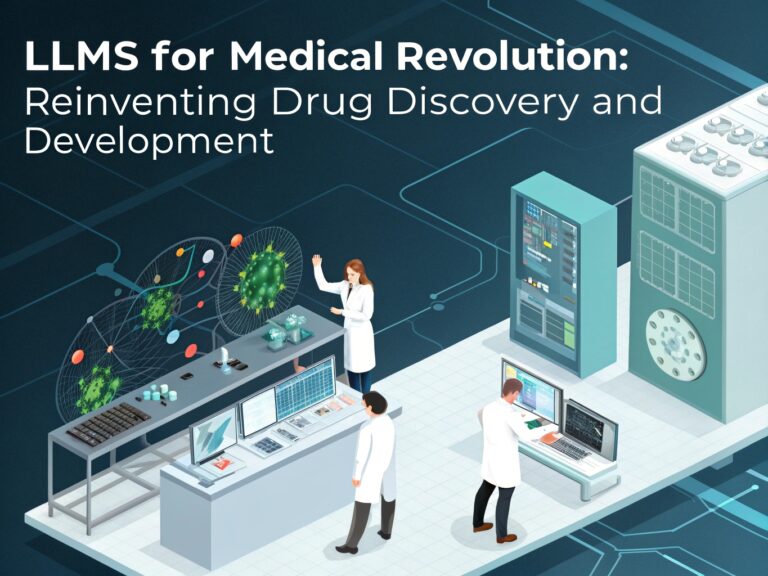The pharmaceutical industry faces a persistent challenge: discovering new molecular structures with specific properties requires enormous computational resources and months of specialized human expertise. Traditionally, scientists must sift through countless potential candidates in a vast chemical space, making drug discovery one of the most time-consuming and expensive processes in medicine.
Language Models Enter the Chemistry Lab
Recent breakthroughs from MIT and the MIT-IBM Watson AI Lab demonstrate that large language models (LLMs) similar to those powering conversational AI could dramatically transform this process. However, adapting these text-based systems to understand and generate molecular structures presented significant scientific obstacles.
“The beauty of this is that everything the LLM generates before activating a particular module gets fed into that module itself. The module is learning to operate in a way that is consistent with what came before,” explains Michael Sun, an MIT graduate student and research co-author.
Llamole: Bridging Language and Molecular Design
The research team developed a groundbreaking approach called Llamole (large language model for molecular discovery), which combines the natural language understanding of LLMs with specialized graph-based AI models designed specifically for molecular generation.
How Llamole Works
Llamole functions as an integrated system with three key components:
- Base LLM Interface – Acts as a gatekeeper, interpreting natural language requests for molecules with specific properties
- Graph-Based Modules – Specialized AI components that handle the complex work of molecular design and synthesis planning
- Interleaved Processing – A novel trigger token system that seamlessly switches between text and graph-based processing
When a researcher requests a molecule with specific characteristics—for example, one that can penetrate the blood-brain barrier and inhibit HIV with a molecular weight of 209—the system activates different modules through specialized trigger tokens:
- The “design” token activates the graph diffusion model to generate molecular structures
- The “retro” token triggers the retrosynthetic planning module to develop step-by-step synthesis instructions
Superior Results Through Multimodal Intelligence
Llamole significantly outperformed traditional approaches in experiments:
- Generated molecules that better matched user specifications compared to 10 standard LLMs, four fine-tuned LLMs, and state-of-the-art specialized methods
- Improved the synthesis success rate from 5% to 35% by creating higher-quality molecular structures
- Produced molecules with simpler structures and lower-cost building blocks
- Outperformed LLMs more than 10 times its size while using fewer computational resources
“On their own, LLMs struggle to figure out how to synthesize molecules because it requires a lot of multistep planning. Our method can generate better molecular structures that are also easier to synthesize,” says Gang Liu, lead author and graduate student at the University of Notre Dame.
End-to-End Molecular Design
Perhaps most impressively, Llamole provides comprehensive outputs that include:
- Visual representation of the molecular structure
- Detailed textual description of the molecule
- Complete step-by-step synthesis plan down to individual chemical reactions
“This could hopefully be an end-to-end solution where, from start to finish, we would automate the entire process of designing and making a molecule. If an LLM could just give you the answer in a few seconds, it would be a huge time-saver for pharmaceutical companies,” notes Michael Sun.
Building the Foundation for Multimodal AI in Chemistry
The researchers faced additional challenges in training their system, as existing datasets lacked sufficient detail. They developed two custom datasets from scratch:
- Augmented hundreds of thousands of patented molecules with AI-generated natural language descriptions
- Created customized description templates focusing on crucial molecular properties
Currently, Llamole is trained on ten specific numerical molecular properties, which presents a limitation the research team hopes to address in future work.
Looking Beyond Medicine
The implications of this research extend far beyond pharmaceutical applications. The team believes their approach could revolutionize how we interact with various complex graph-based data structures:
- Power grid sensor networks
- Financial market transactions
- Other complex interconnected systems
“Llamole demonstrates the feasibility of using large language models as an interface to complex data beyond textual description, and we anticipate them to be a foundation that interacts with other AI algorithms to solve any graph problems,” says Jie Chen, senior research scientist and manager at the MIT-IBM Watson AI Lab.
The Future of AI-Powered Molecular Discovery
The research team has several goals for further development:
- Generalizing Llamole to incorporate any molecular property beyond the current ten
- Improving the graph modules to boost synthesis success rates
- Expanding the multimodal approach to other graph-based data applications
As this technology matures, it promises to dramatically accelerate drug discovery timelines, potentially bringing life-saving medications to patients faster while reducing development costs. The fusion of natural language processing with specialized scientific models represents an important evolution in how artificial intelligence can transform the medical and pharmaceutical industries.
The research will be presented at the International Conference on Learning Representations, highlighting its significance in the field of machine learning applications for healthcare and pharmaceutical development.
If you are interested in this topic, we suggest you check our articles:
- LLMs for Planning Tasks: Transforming AI into Intelligent Planning Assistants
- Large Language Models (LLMs): The Basics Explained
- Avoiding LLM’s “hallucinations” could now be possible
Sources: MIT
Written by Alius Noreika

